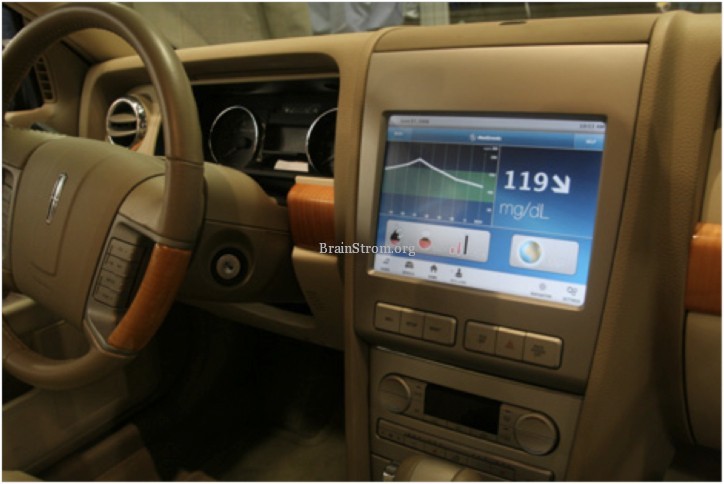For adults it is unusual not to drive a car. There are already more than 800 million four-wheeled vehicles on the roads and the number is likely to double by 2050. In the US the average daily drive time is 24 minutes and over the course of a year commuting to work eats up more than 100 hours. Although most of us consider ourselves to be good and safe drivers, the act of driving from A to B actually requires coordination of a highly complex physiological, anatomical and behavioral systems, all of which can be affected adversely by illness and medications. Although medical conditions are infrequent causes of road traffic accidents, people living with chronic medical conditions such as diabetes do give up using their vehicle because of a perceived risk to them whilst at the wheel.

Given the amount of time spent in a car, perhaps this could be used for medical related reasons? As well as providing an opportunity for patient monitoring, there could also be potential benefit from integrating a driver’s physiology into the mechanical workings of the vehicle. As an example, for a diabetic patient at risk of hypoglycemia, glucose monitoring systems could be linked to the ignition – the car could be modified so as not to start if a glucose level is below ideal. Furthermore, already available continuous glucose monitoring systems could predict the potential for hypoglycemia during a car-journey, alert the driver by auditory, visual or tactile alarms and switch on the satellite navigation system to direct the driver to the nearest source of carbohydrate. Other useful monitoring opportunities could include
- Real-time monitoring of heart rate and rhythm including ambulatory monitoring for silent myocardial ischemic events
- Real-time blood pressure monitoring. This may help with the assessment of drug therapy and reduce the potential for recording so-called “white-coat” hypertension
- In-vehicle oxygen for individuals with hypoventilatory disorders
- Real-time brain wave monitoring for those with a history of seizures
Another simple option would be in-car alcohol monitoring for individuals convicted previously of driving under the influence of alcohol. In-car recording of high breath or sweat levels could prevent driving altogether.
All in all having a car that offers medical monitoring could have favorable implications for driver licensing and insurance and perhaps open up new employment opportunities currently restricted because of disease or therapy e.g. truck driving for patients treated with insulin. It may also improve road safety. In addition, data useful for clinicians, could be generated during driving and sent wirelessly to clinics to aid patient management. This could reduce the need for multiple trips to see the doctor or nurse to have various medical devices fitted, removed and the results discussed.
Medtronic have already created a prototype car for people with diabetes and there are an increasing number of patent applications filed based on this concept. For the consumer, the availability of in-car medical monitoring could be another factor involved in choosing a car but as always it is likely that price will still be the number one consideration.
Thanks for installing the Bottom of every post plugin by Corey Salzano. Contact me if you need custom WordPress plugins or website design.

